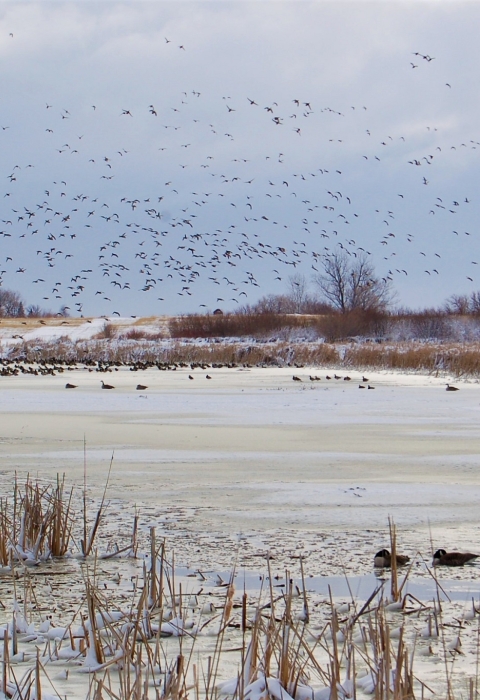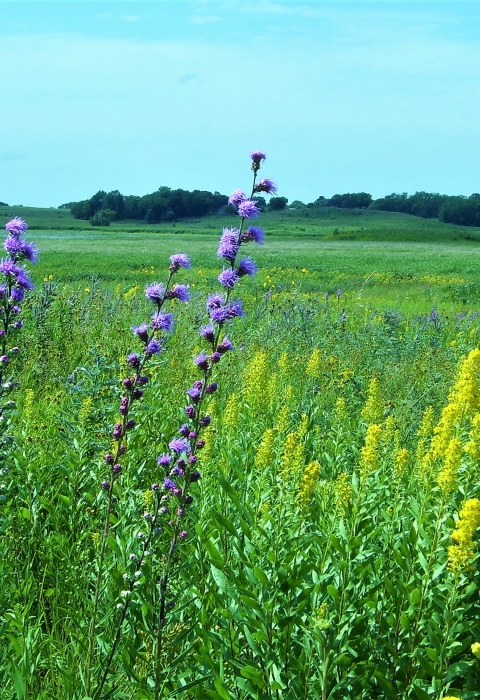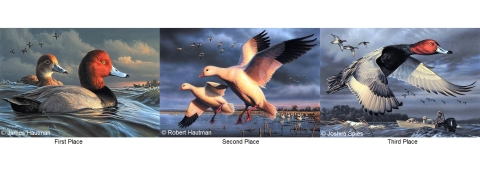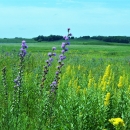About Us
Litchfield Wetland Management District was established in 1978 to acquire, restore, and manage habitat for waterfowl production and other migratory birds.
Today, the district manages 156 separate parcels of federally owned land, called waterfowl production areas, within a seven county area in south-central Minnesota. These counties include Kandiyohi, McLeod, Meeker, Renville, Stearns, Todd, and Wright counties. Together, the waterfowl production areas encompass about 38,000 acres of land dedicated to wildlife and wildlife-dependent recreation. The district also manages Northern Tallgrass Prairie National Wildlife Refuge tracts that fall within its range. The district currently manages four public refuge tracks that are adjacent to waterfowl production areas. District lands contain diverse native habitats from native forest in the northeast to the tallgrass prairie in the south and west, with the transition zone in between.
In addition to managing land for public use, the district protects more than 13,000 acres of privately-owned wetland and grassland habitat, purchased as permanent easements to restore and protect habitat. The land remains in private ownership, but the easements protect the integrity of the wetlands and surrounding uplands for wildlife. The district also works with private landowners to protect privately-owned wetlands and prairies through the voluntary Partners for Fish and Wildlife Program.
Our Mission
The mission of the National Wildlife Refuge System is to administer a national network of lands and waters for the conservation, management and, where appropriate, restoration of the fish, wildlife, and plant resources and their habitats within the United States for the benefit of present and future generations of Americans.
Every national wildlife refuge national wildlife refuge
A national wildlife refuge is typically a contiguous area of land and water managed by the U.S. Fish and Wildlife Service for the conservation and, where appropriate, restoration of fish, wildlife and plant resources and their habitats for the benefit of present and future generations of Americans.
Learn more about national wildlife refuge and wetland management district wetland management district
A wetland management district is a U.S. Fish and Wildlife Service office that manages waterfowl production areas in one or more counties. Waterfowl production areas are small natural wetlands and grasslands that provide breeding, resting and nesting habitat for waterfowl, shorebirds, grassland birds and other wildlife. The Fish and Wildlife Service acquires waterfowl production areas under the authority of the Migratory Bird Hunting and Conservation Stamp Act, primarily using funds from the sale of Federal Duck Stamps. The Refuge System’s 38 wetland management districts comprise thousands of waterfowl production areas – almost all in the Prairie Pothole Region of the Northern Great Plains.
Learn more about wetland management district was created for a special purpose. Some were created to protect migratory birds, others to protect threatened or endangered species or unique habitats, while others fulfill another special purpose. All activities allowed on refuges must be evaluated to make sure each activity will not conflict with the reason the refuge was founded.
The purpose of Litchfield Wetland Management District is to serve as a refuge and breeding ground for migratory birds and other wildlife.
Our History
March 16, 1934 - The Migratory Bird Hunting and Conservation Stamp Act was created. Commonly referred to as the "Duck Stamp Act" this law requires each waterfowl hunter 16 years of age or older to possess a valid Federal hunting stamp. The receipts from the sale of the stamp are deposited in a special Treasury account known as the Migratory Bird Conservation Fund and are not subject to appropriations.
August 1, 1958 - Congress officially created the Small Wetland Acquisition Program by amending the 1934 Migratory Bird Hunting and Conservation Stamp Act to allow proceeds from the sale of Federal Duck Stamps to be used to protect waterfowl habitat.
1978 - Litchfield Wetland Management District was officially established to acquire, oversee, and manage waterfowl production areas and easements within its range.
2000 - Northern Tallgrass Prairie National Wildlife Refuge was established to address the loss of America’s grasslands and the decline of grassland wildlife.



